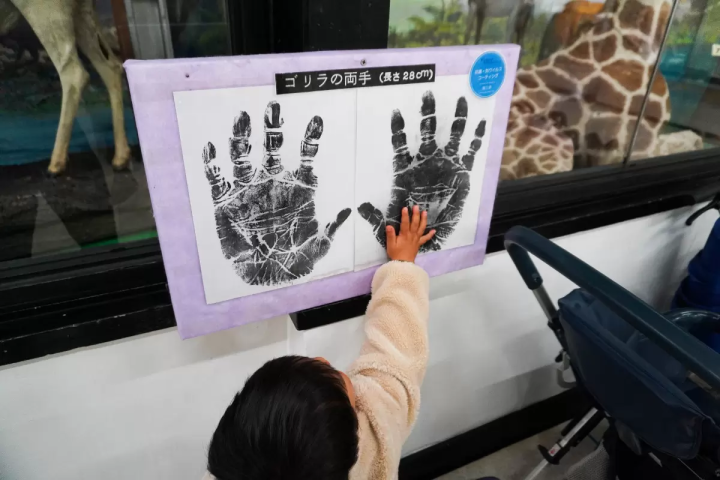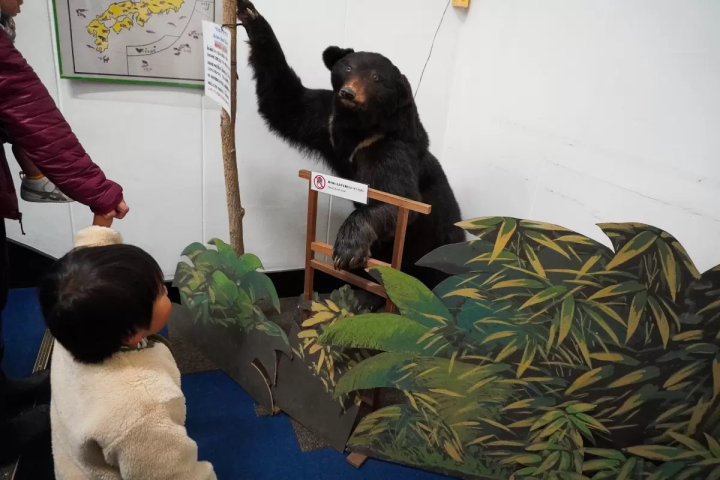Located in Tsuyama City, Okayama Prefecture , the Tsuyama Museum of Nature's Wonders is a museum that boasts approximately 20,000 exhibits, allowing visitors to get up close and personal with animals from around the world. The taxidermy exhibits are particularly impressive! We will introduce some of the fascinating exhibits at this museum.
2024.04.02What is Tsuyama Nature Museum?

Tsuyama Nature Museum is located right next to the entrance to Tsuyama Castle (Kakuzan Park). It has a whopping 20,000 exhibits, including real stuffed animals, fossils, minerals, shellfish, insects, and human specimens. The wide variety of exhibits is impressive, including exhibits of endangered and rare animals. Unlike looking at them in an illustrated book, you can see the size and three-dimensionality of the animals, allowing for a deeper understanding. It will impress not only animal lovers, but also those who are not familiar with animals.
15 exhibition rooms

The exhibits at Tsuyama Nature Museum are divided into 15 rooms, including fossils, the wonders of the human body and animal skeletons, shells, insects, animals by habitat, reptiles, birds, minerals and rocks, etc. There are so many exhibits, about 20,000 items, that I can only introduce a small part of them in this article, but I will focus on the exhibits that I personally found most impressive.
Taxidermy animals welcome you

At the entrance to the museum, you are greeted by a St. Bernard dog. I was surprised by its size and was surprised to find that it was not a model, but was all real except for the eyes and tongue. There are many stuffed animals on display, including this St. Bernard dog.

There are also stuffed specimens of rare endangered wild animals from around the world! They look so impressive, they look like they might come to life at any moment.
A Toyotomi variety of shellfish

I saw shells of colors and shapes I had never seen before. I was amazed at the Toyotomi variety and beauty of the shells.
Colorful, shining insects

I had seen colorful, sparkling butterfly wings in picture books, but this was my first time seeing one in real life. They were even more beautiful and shiny than they looked in the picture books.

There was a specimen of the world's largest rhinoceros beetle, the Hercules beetle.
Animals of the World

A stuffed lion family, including a baby lion.

He stares at me intently.

It looks like a bird is about to take flight. I can almost hear the flapping sound.

There are also exhibits of animals native to Japan, such as rabbits and wild boars.

A wide variety of birds perch on the trees.

A crocodile! I know it won't move, but I'm still scared. I'm trembling a little, imagining what would happen if it bit me with those sharp teeth.
Exhibits other than animals

There are also exhibits other than animals, such as fossils, minerals, and rocks. The exhibition area is smaller than the animal exhibits, but there is a Toyotomi variety. The photo shows the mineral exhibit.

A whale fossil discovered in Tsuyama City is estimated to be about 20 million years old.
The mysteries of the human body and animal skeletons
Photography is not permitted in Room 2, "The Mysteries of the Human Body and Animal Skeletons," so only explanations will be provided. This exhibition room displays actual specimens of the human body's internal organs, including the brain and heart of Keizo Morimoto, founder of the Tsuyama Museum of Nature's Wonders. This exhibition was made possible in accordance with Morimoto's wishes in his will. After his death, the organs were dissected and donated as specimens for human physiology. This was apparently the first time that a museum in Japan had exhibited actual specimens of the human body's internal organs.
The way it's displayed is interesting!

The exhibits were well thought out and made for an interesting tour. This exhibit compares the size of a gorilla's hand to that of a child's hand, which is several times larger than a child's.

Suddenly, a bear appears at the corner of the stairs.

Each animal exhibit is color-coded, as shown in the photo, so that you can easily tell at a glance whether it is an extinct or endangered species.

Small animal exhibits are easier to see with the help of a magnifying glass.
[Tsuyama Nature Museum]
Address: 98-1 Sange , Tsuyama City, Okayama Prefecture
TEL: 0868-22-3518
Opening hours: 9:00-17:00 (last entry at 16:30)
Closed: Mondays in March, May, July, September, and November (open during Golden Week), Mondays and Tuesdays in January, February, June, and December, and open every day in April, August, and October
*Open on public holidays New Year's holidays (December 29th to January 2nd)
Admission fee: 800 yen for adults, 600 yen for children (elementary and junior high school students), 400 yen for infants (4-5 years old)
Parking: No dedicated parking
*Please use the free parking lot at the adjacent tourist center.
(During the Tsuyama Sakura Festival , the parking lot becomes a temporary parking lot and a fee is charged.)
The contents on this page may partially contain automatic translation.





